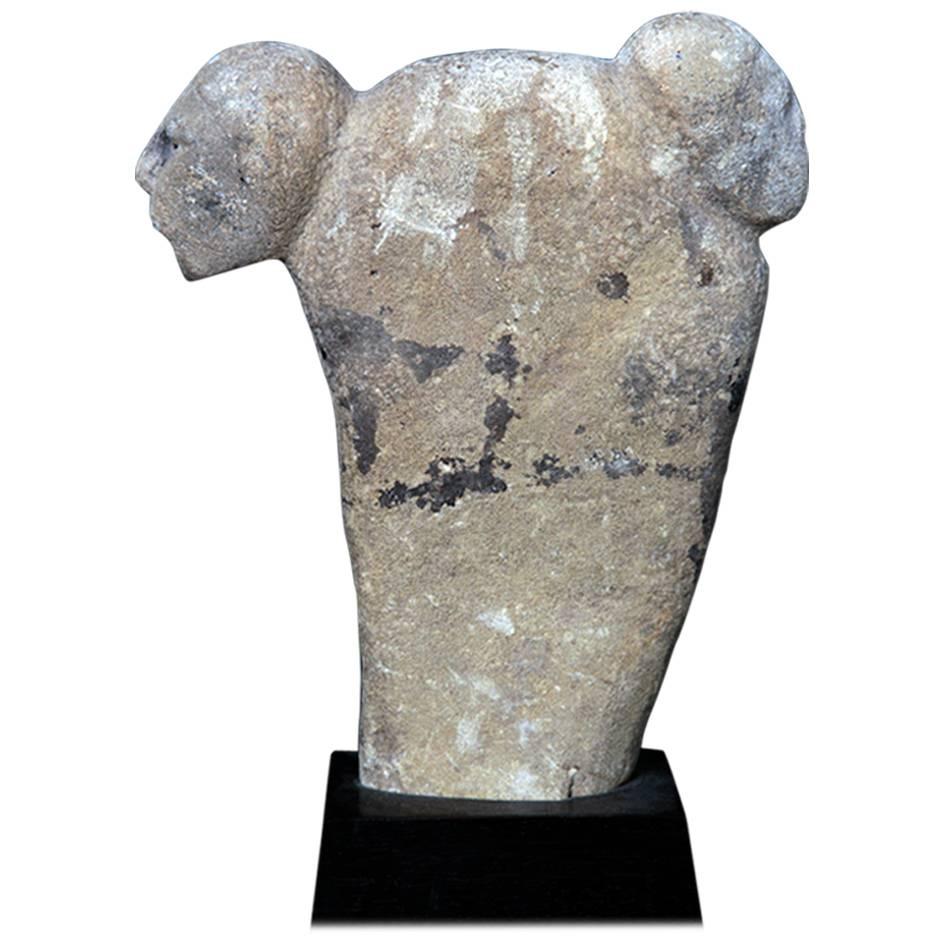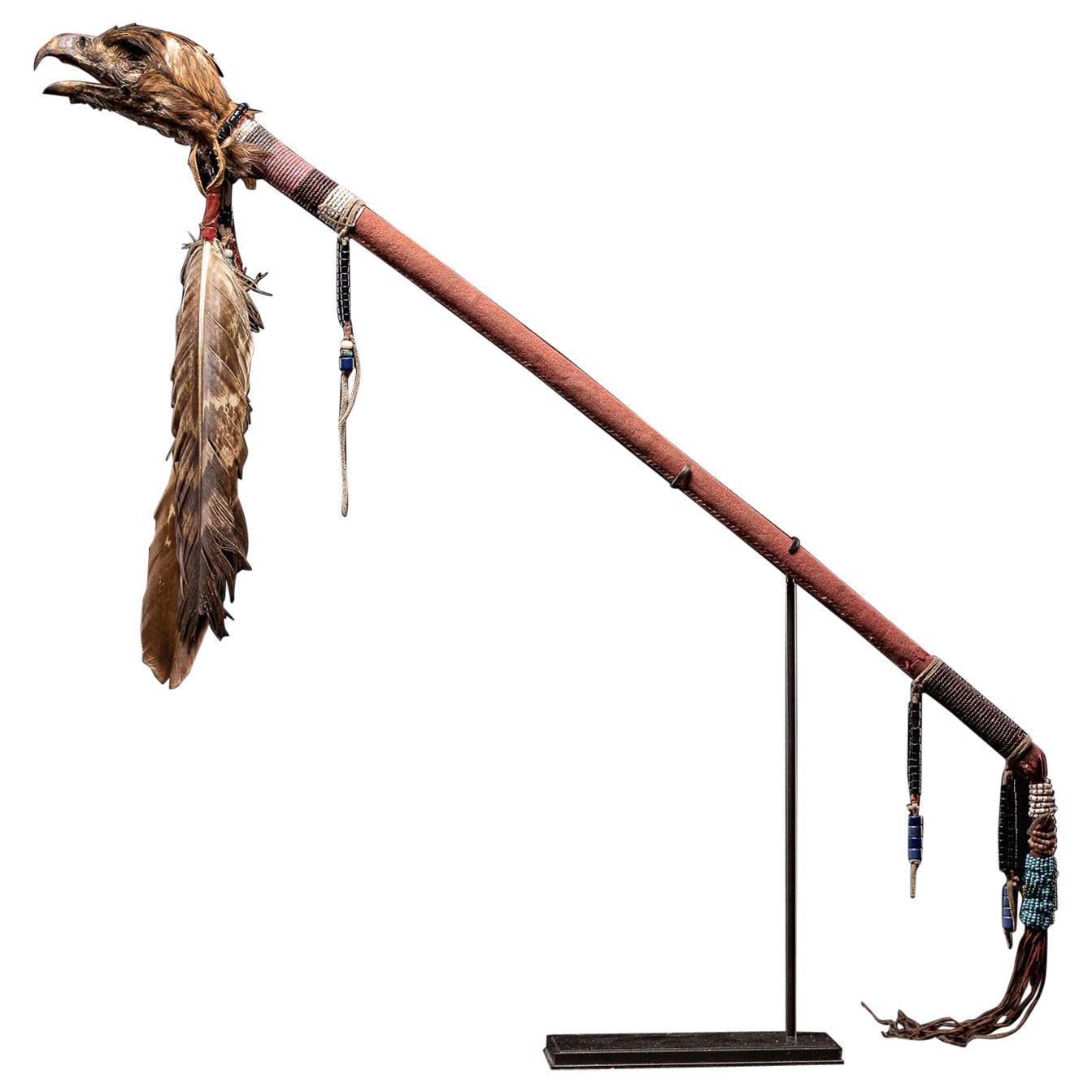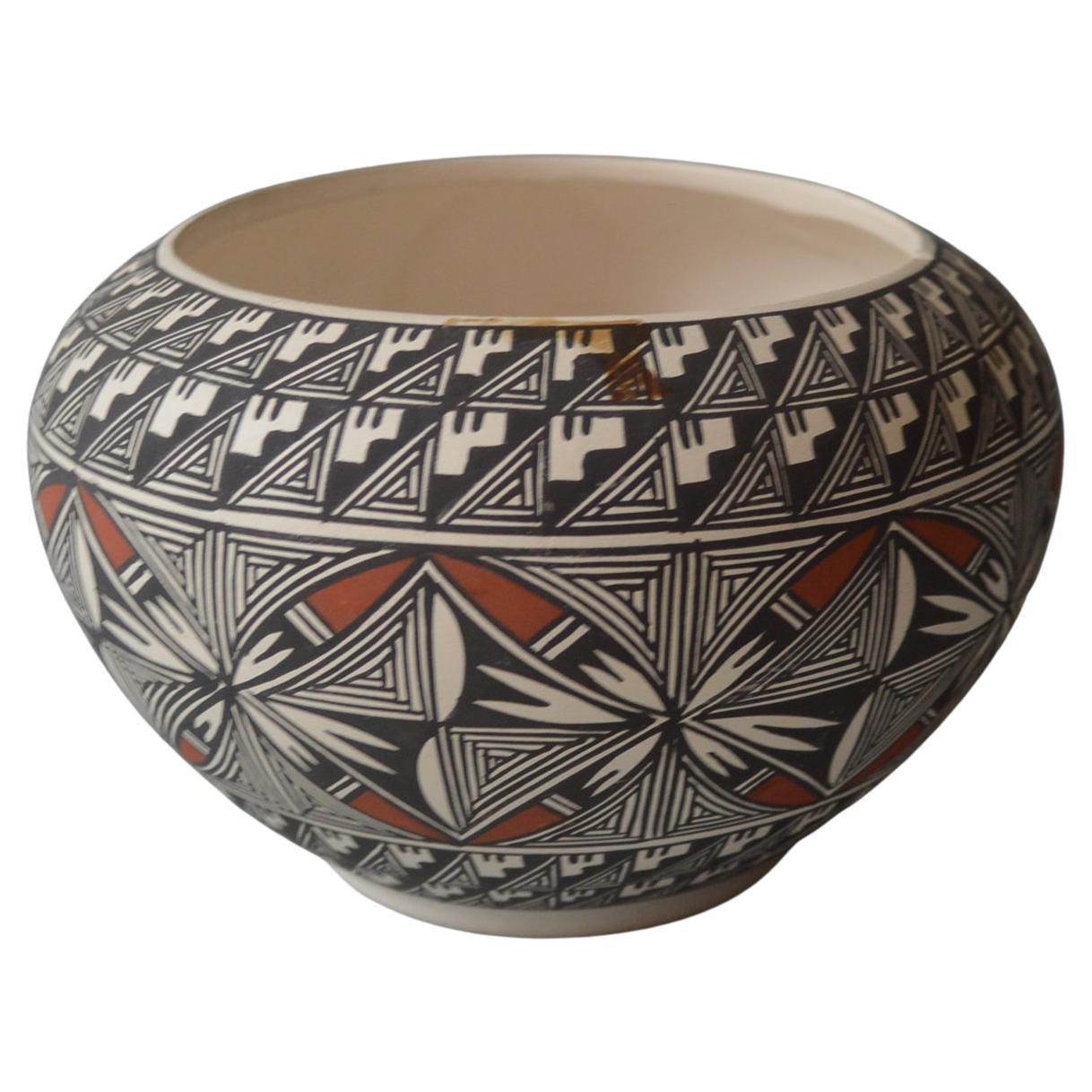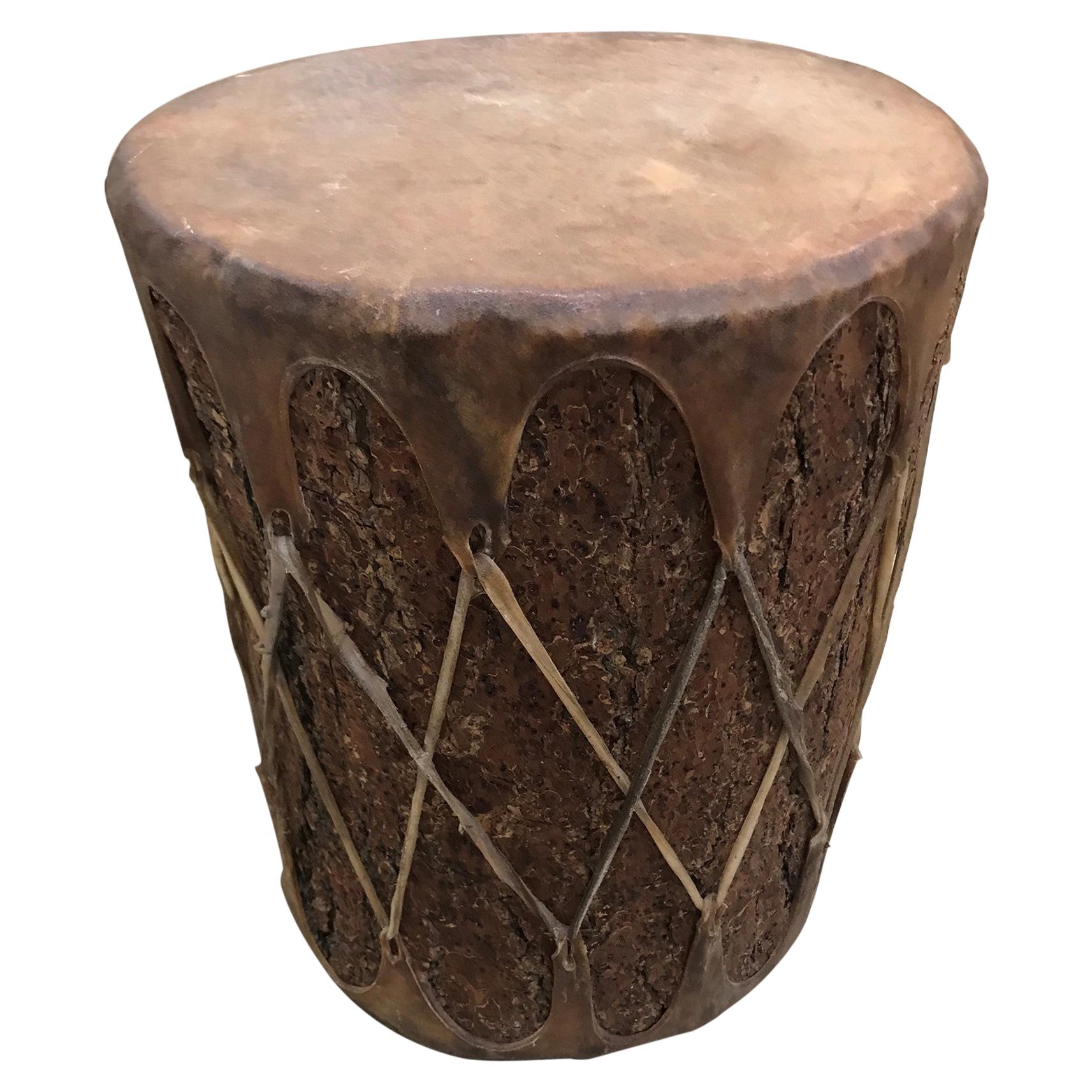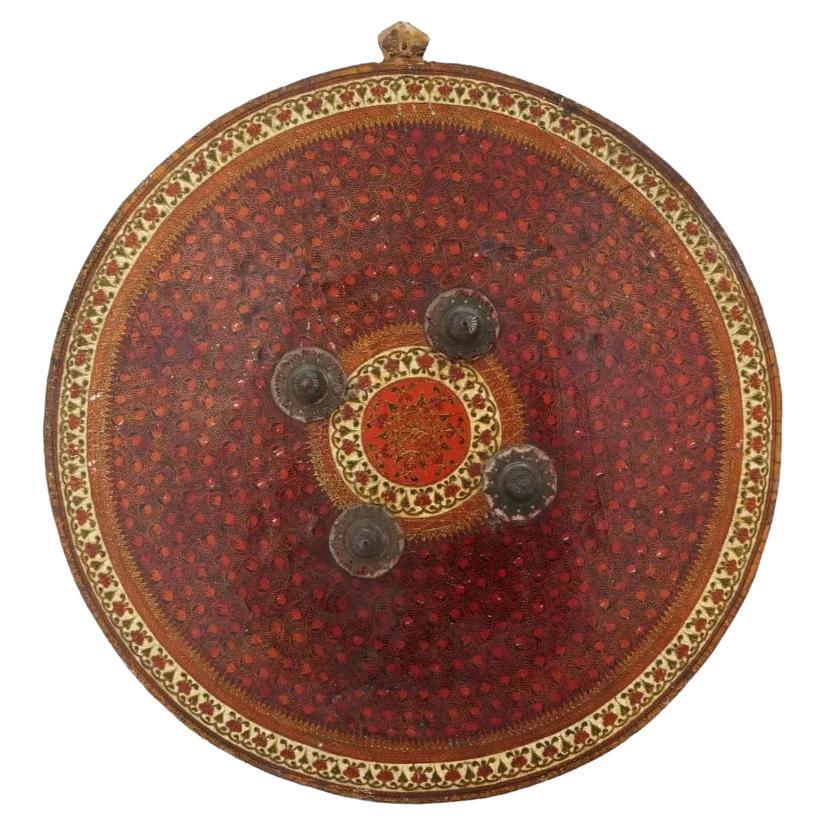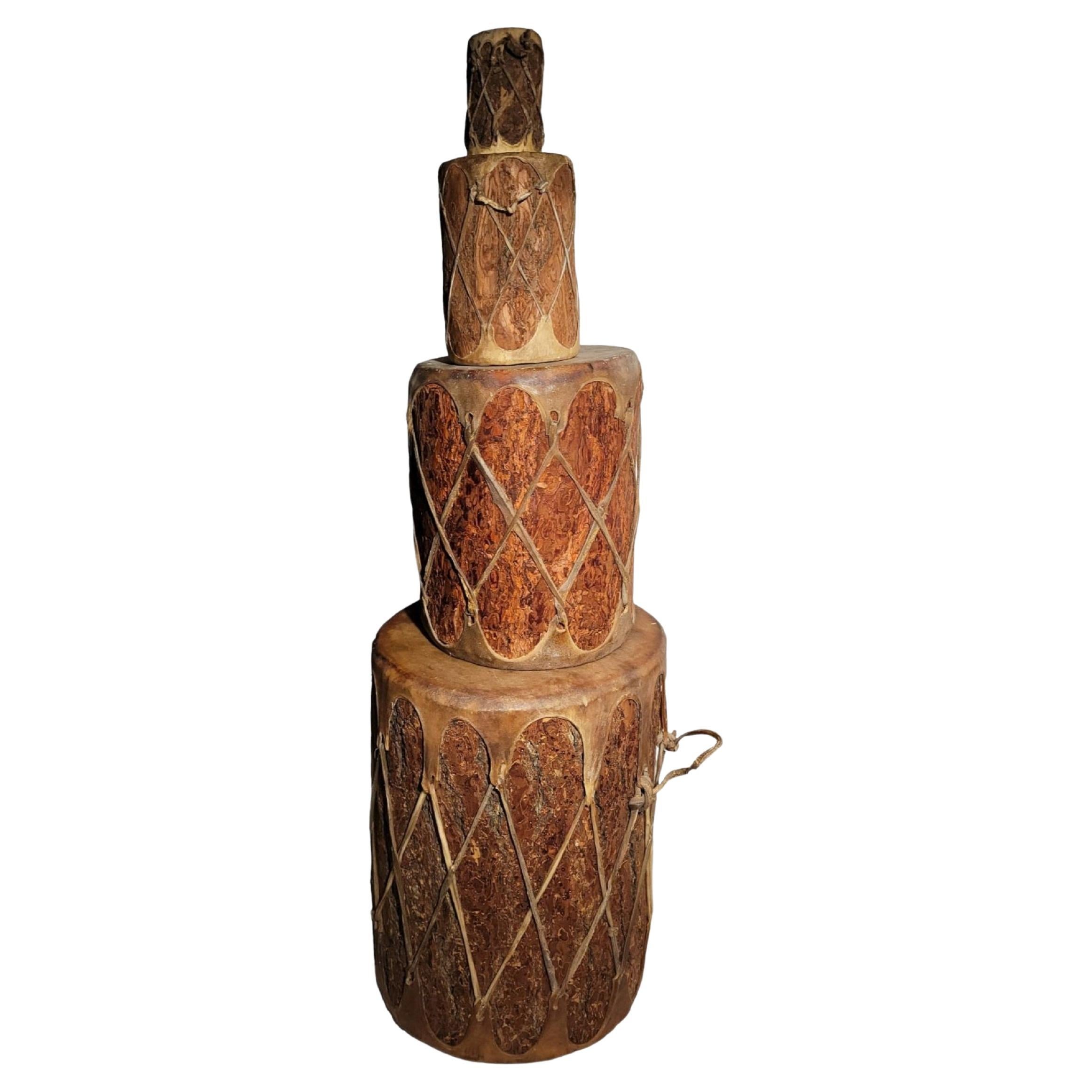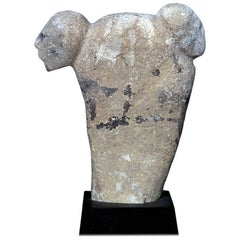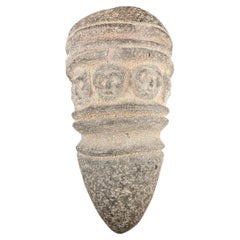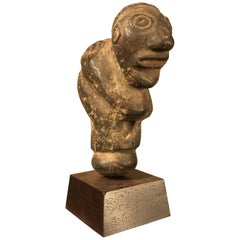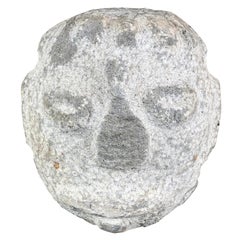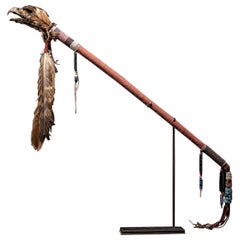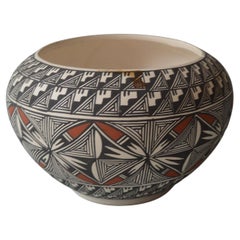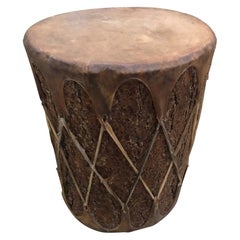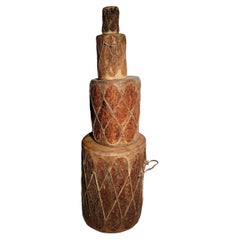Artículos similares a Fine America’s Chieftain Ceremonial Figure
¿Quieres más imágenes o vídeos?
Solicita imágenes o vídeos adicionales al vendedor
1 de 19
Fine America’s Chieftain Ceremonial Figure
Acerca del artículo
Pre-Columbian style , Hispaniola, Arawak Peoples, Taino Native Indians
This is a finely carved Taino Cacique Chief's hand carved hard wood figure- a superb ancestor style ceremonial sculpture from the Arawak Peoples of the Greater Antilles Islands. It comes from a Florida collection. We will include a custom display base as shown.
This figure was made from a single piece of wood, representing an anthropomorphic figure with sculptured head and finely engraved with a large Cacique face and linear motifs on the head, chest, and hands. In ancient times similar would have been revered by the a principal practitioner of the cohoba ritual by the Taino's. circa 1200-1550 A.D.
While the precise ancient function of such objects remains somewhat a mystery- they continue to impress us with their bold abstract form and magical associations.
In the seminal book Taino, Pre-Columbian Art & Culture from the Caribbean published by the El Museo del Barrio, ancient figures and duho are discussed at length as private power-objects used in egalitarian tribes and used in public ritual to legitimize the hierarchical social structure of complex chiefdoms. Please also refer to the excellent publication March 1994 seminal article Tribal Arts: The Sculptural Ancestry of the Taino- masterpieces from the Pre-Columbian West Indies.
This remarkable sculpture includes a Zemi figure face which was meticulously incised with round deep-socketed eyes, prominent nasal cavities, drilled ear lobes possibly for feather fetishes, wide open mouth, and lobed ears. Some scholars find such scarifications relate to ancestral and/or fertility myths.
An ancient carved version of this quality and size would have belonged to a chieftain -caciques- or ranking member of the royal household. Although Taino left no written documents, Spanish settlers did record native practices and one account refers to special structures in which chieftains stored their Trove of important ceremonial carvings. The Taino believed in existence of afterlife and Shamanic ability to communicate with the dead. This remarkably evocative work reminds us to peak into ancient splendors of Taino civilization.
Dimensions: 8.25 inches high and 2.25 inches wide
Hand carved.
Provenance: Old Florida collection.
Taino history:
The Taino flourished from 1200-1500.
When Columbus arrived in America, the first people he encountered were the Taino People- inhabitants of the islands of the northern Caribbean Sea, known as Hispaniola. They were Arawakan-speaking people who at the time of Christopher Columbus’s exploration inhabited Cuba, Jamaica, Hispaniola (Haiti and the Dominican Republic), Puerto Rico, and the Virgin Islands. Once the most numerous indigenous people of the Caribbean, the Taino may have numbered several million at the time of the Spanish conquest in the late 15th century.
Their highly developed belief system focused on zemi ancestor or god worship. A zemi was the physical manifestation of a god, spirit or ancestor. The chieftain -caciques- encouraged ancestor worship and were often deified after death. The religious leaders or shamans were thought to be able to communicate with the souls of the dead when intoxicated by the hallucinogenic cohoba. A preoccupation with death is evident in many Taino art-forms and partly explains the prevalence of zoomorphic images. Bats, owls and frogs were all popular motifs and were regarded as harbingers of life after death. The Taino believed that the dead could be reborn in animal form and some believe animals were their earliest ancestors in Taino creation myth. hence we find their zoomorphic sculptures as combinations of human and animal forms particularly provocative and great conversational art. The creator god was known as Yúcahu Maórocoti, encouraging growth of staple foods, like cassava. The goddess was Attabeira, who regulated and dominated over water, rivers, and seas.
Their contribution to the Spanish includes Indian corn, tobacco, rubber balls to unique art and artifacts, plus a new vocabulary. Importantly, the Taino lasting effects on Western civilization, though through brief contact, was an important and lasting one.
Lifetime guarantee of authenticity: All of our works of art come with our Lifetime Authenticity Guarantee.
.
- Dimensiones:Altura: 20,96 cm (8,25 in)Anchura: 5,72 cm (2,25 in)Profundidad: 5,08 cm (2 in)
- Estilo:Precolombino (En el estilo de)
- Materiales y técnicas:
- Lugar de origen:
- Época:
- Fecha de fabricación:20th Century
- Estado:Desgaste acorde con la edad y el uso.
- Ubicación del vendedor:South Burlington, VT
- Número de referencia:1stDibs: LU1289245167122
Sobre el vendedor
5,0
Vendedor Platino
Vendedores premium con una calificación de +4,7 y tiempos de respuesta de 24 horas
Establecido en 1990
Vendedor de 1stDibs desde 2015
2378 ventas en 1stDibs
Tiempo de respuesta usual: 1 hora
- EnvíoRecuperando presupuesto…Envío desde: South Burlington, VT
- Política de devolución
Partes de esta página se han traducido automáticamente. 1stDibs no puede garantizar la exactitud de las traducciones. El inglés es el idioma predeterminado de este sitio web.
Garantía de autenticidad
En el improbable caso de que haya algún problema con la autenticidad de un artículo, ponte en contacto con nosotros en un plazo de 1 año para recibir un reembolso total. DetallesGarantía de devolución de dinero
Si tu artículo no es como se describe, sufre daños durante el transporte o no llega, ponte en contacto con nosotros en un plazo de 7 días para recibir un reembolso total. DetallesCancelación dentro de las 24 horas
Tienes un período de gracia de 24 horas para reconsiderar tu compra, sin preguntas.Vendedores profesionales aprobados
Nuestros vendedores de primera clase deben cumplir estrictos estándares de servicio para mantener la integridad de nuestros anuncios.Garantía de igualación de precios
Si encuentras que un vendedor publicó el mismo artículo por un precio menor en otro lado, igualaremos ese precio.Entrega global de confianza
Nuestra red de transporte de primera ofrece opciones de envío especializado en todo el mundo, que incluye envío personalizado.Más de este vendedor
Ver todoTalismán de caza del búfalo de piedra de las primeras llanuras americanas
Talismán de caza del búfalo en forma de pezuña de búfalo con cabeza y cola de efigie humana, tallado y pintado a mano en granito, 1800-1900.
Dimensiones: 12 pulgadas de alto y 9,5 p...
Categoría
Antiguo, siglo XIX, Estadounidense, Objetos nativos norteamericanos
Materiales
Granito
Río Columbia Masivo Mortero Ceremonial de Piedra Tallada Pre Contacto Nueve Efigies
De la zona del río Columbia, en el noroeste de la América Nativa, procede este cuenco o mortero ceremonial de piedra basáltica, tallado a mano, antiguo, sustancial y único, con nueve...
Categoría
Antiguo, siglo XV y antes, Estadounidense, nativo estadounidense, Objeto...
Materiales
Piedra
Antigua pipa de piedra americana "Efigie humana", periodo de los bosques
Efigie humana prehistórica americana pipa de piedra, periodo de los bosques, 2500 a.C.
Anteriormente en la colección de Harold French, Amboy, Indiana (foto)
Todas las tallas de pi...
Categoría
Antiguo, siglo XV y antes, Estadounidense, Objetos nativos norteamericanos
Materiales
Piedra
4800 US$ Precio de venta
Descuento del 43 %
Cabeza humana antigua de granito tallada a mano de los indios americanos
De la América Nativa nos llega esta antigua efigie de cabeza de granito tallada a mano, atribuida al Pueblo Yokuts. Se recogió en un rancho privado en 1960 procedente de la cuenca de...
Categoría
Antiguo, siglo XIX, Estadounidense, Objetos nativos norteamericanos
Materiales
Arcilla
Escultura de piedra femenina americana "Efigie humana", Tennessee, 1000 d.C.
Estatua femenina de efigie humana de un nativo americano, yacimiento de Holliston Mills, Tennessee , arenisca, hacia el año 1000 d.C.
Dimensiones: 11,75 pulgadas de alto y 3,75 pulg...
Categoría
Antiguo, siglo XV y antes, Estadounidense, Objetos nativos norteamericanos
Materiales
Arenisca
Escultura Efigie de Cabeza Humana en Piedra Natural Antigua de los Nativos Americanos
Del sudoeste de la América Nativa nos llega esta singular efigie de "cabeza humana" de piedra natural. Se descubrió en la zona de Tesuque, Nuevo México, en 1960. Es una concreción na...
Categoría
siglo XX, Estadounidense, Objetos nativos norteamericanos
Materiales
Arenisca
También te puede gustar
Bastón de jefe ceremonial indio de las llanuras ;
Bastón de mando ceremonial original de principios del siglo XX. Las plumas se sustituyeron posteriormente;
Categoría
siglo XX, Objetos nativos norteamericanos
Materiales
Madera dura
Olla Laguna Vintage Pueblo Nativo Americano
Olla Laguna Vintage Pueblo Nativo Americano
Finamente pintado con diseños geométricos lineales
Periodo 1970s firmado en la base R Reano
Buen estado
Categoría
siglo XX, Estadounidense, Objetos nativos norteamericanos
Materiales
Alfarería
Tambor indio ceremonial del siglo XIX
Este fantástico tambor antiguo, hecho a mano y recubierto de corteza, tiene el recubrimiento de piel original y está en muy buen estado. Tiene una maravillosa pátina envejecida.
Categoría
Antiguo, siglo XIX, Estadounidense, Adirondack, Objetos nativos norteame...
Materiales
Madera, Cuero
1196 US$ Precio de venta
Descuento del 20 %
Colección de cuatro tambores indígenas ceremoniales Pueblo
Juego de cuatro tambores ceremoniales nativos americanos
Tambor más grande - 15 alto x 12 diámetro
Segundo más grande - 8 de diámetro x 10 alto
La tercera más grande - 6 alto 4 diá...
Categoría
principios del siglo XX, Estadounidense, Adirondack, Objetos nativos nor...
Materiales
Cuero, Madera
1516 US$ Precio de venta
Descuento del 20 %
Gran Escudo Ceremonial Dhal de Papel Maché de la India
Gran escudo ceremonial indio de papel maché Dhal. El escudo Dhal, redondo y ligeramente curvado, con cuatro salientes metálicos, está ricamente decorado con un dibujo rítmico pintado...
Categoría
Antiguo, siglo XIX, Desconocido, Objetos nativos norteamericanos
Materiales
Papel
Gran corbata de bolo Vintage Nativo Americano Navajo Turquesa de ley
Una corbata de bolos de plata de ley con turquesa azul verdosa, fina y bonita, de gran tamaño y diseño navajo hecho a mano
Alrededor de los años sesenta.
Con corbata trenzada de cue...
Categoría
siglo XX, Estadounidense, Objetos nativos norteamericanos
Materiales
Silver
